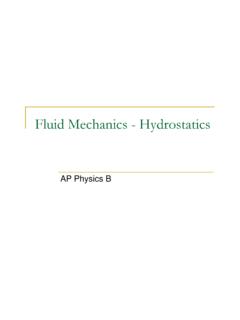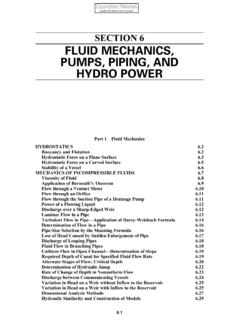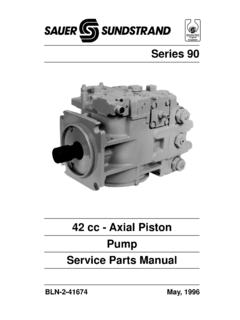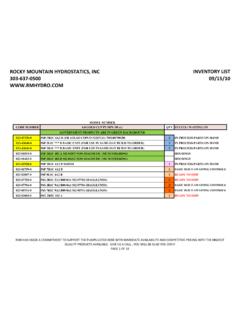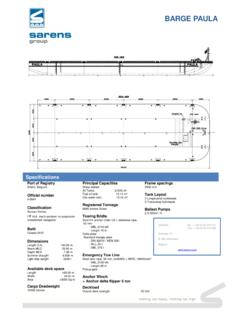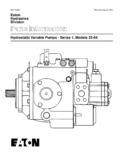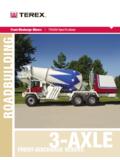Transcription of Westlawn Institute of Marine Technology
1 Westlawn Institute of Marine Technology Yacht & Boat Design Program Course Objectives and Syllabi Course # Module 1 Principles of Small Craft Naval Architecture Course # Module 1 Objectives When the student has mastered the program material, he/she will be able to: 1. Describe the design spiral 2. Comprehend and discuss the basic laws of flotation and describe the basic physical laws which state how various propulsion systems work. 3. Solve basic algebraic, geometric, and trigonometric problems after completing this math review. 4. Discuss the meaning of a set of hull lines, calculate displacement using Simpsons Rule or the Trapezoidal Rule, locate the center of buoyancy of a hull, and compute wetted surface, and perform a weight study and locate a hull s center of gravity. 5. Discuss and apply the concepts involved regarding the nature of frictional, residual and wind resistance and be able to make recommendations to reduce resistance.
2 Calculate righting arms and righting moments at any angle of heel, analyze stability curves, and comprehend the principles of trim and flotation. 6. Create and prepare presentation drawings and proposals for new yachts. 7. Use the required drafting instruments to properly draw lines, curves fair sweeps and other figures needed to draw working plans and apply what you have learned to draw an outboard-profile elevation and general-arrangement plan. 8. Create and draw and fair a complete set of hull lines, prepare a table of offsets, and a set of hydrostatic calculations for a hull lines drawing. 9. Obtain a passing grade on a series of written examinations demonstrating that the student attained the required knowledge in the subjects presented in this course and can apply the knowledge to correctly answer the questions and problems presented in the examinations.
3 Course # Module 1 Goals The overarching goals of this course are to enable students to: 1. Analyze the meaning of a set of hull lines and to calculate the various physical characteristics that describe a boat. 2. Discuss and break down the nature of frictional and residual resistance and be able to make recommendations to reduce resistance. 3. Describe the mechanisms involved in transverse metacentric stability and dynamic stability and acquire a comprehension of the principles trim and flotation. Yacht & Boat Design Program Course Objectives and Syllabi Westlawn Institute of Marine Technology 2 4. Develop the skills required for manual Marine drafting. 5. Draw and fair a complete set of hull lines 6. Obtain a passing grade on a series of written examinations demonstrating that the student attained the required knowledge in the subjects presented in this course and can apply it to correctly answering exam questions and problems This course prepares the student to work as an apprentice to yacht and boat designers with production boat building companies or at firms engaged in private practice while continuing his/her studies.
4 It is the prerequisite to course # Module 2. Course # Module 1 Syllabus LESSON 1: Introduction to Yacht Design 1. The Growth of Recreational Boating and the Designers Place in the Industry 2. The Yacht Designer and the Design Process 3. Basic Laws of Flotation 4. Basic Laws of Propulsion 5. Propulsion Methods 6. Preliminary Sketching 7. Drawing Examples LESSON 2: Basic Mathematics (Review) 1. Introduction 2. Fractions 3. Percentage, Ratio, & Proportion 4. Systems of Measurement 5. Measuring Instruments 6. Elements of Algebra 7. Elements of Geometry 8. Essentials of Trigonometry 9. Descriptive Terms for Basic Hull Measurement LESSON 3: Introduction To Hydrostatics 1 1. Introduction 2. Integration Rules 3. Displacement 4. Center of Buoyancy 5. Wetted Surface 6. Center of Gravity 7. Coefficients of Form 8. Curve of Areas LESSON 4: Review Topics in lessons 1, 2 and 3 LESSON 5: PRINCIPLES OF RESISTANCE 1.
5 Basic Fluid Characteristics Yacht & Boat Design Program Course Objectives and Syllabi Westlawn Institute of Marine Technology 3 2. Frictional Resistance a. Boundary Layer b. Reynolds Number 3. Residual Resistance 4. Wind Resistance 5. Resistance Peculiar to Sailboats 6. Metacentric Analysis 7. Resistance and Powering 8. Calculating Frictional Resistance 9. Estimating Displacement Requirements for Displacement Boats LESSON 6: Stability 1 - Transverse Stability 1. Introduction 2. Principles of Transverse Stability 3. Hull Design Factors that Influence Transverse Stability 4. Initial Stability Calculations 5. Heeled Stability 6. Curves of Statical Stability 7. Sea States 8. Dynamic Stability LESSON 7: Design Practicum - Preliminary Sketching 1. Employ a segment of the design spiral to solve a typical design office problem.
6 2. Explore several alternatives in order to arrive at the best solution. 3. Present best solution graphically in the form of a preliminary sketch. LESSON 8: Stability 2 - Longitudinal Stability 1. Trim and Flotation a. Change in level flotation b. Immersion Calculations 2. Longitudinal Stability a. Longitudinal GM b. Longitudinal Moment of Inertia of Waterplane 3. Calculations for Change of Trim a. Moment to trim 1 inch (or 1 centimeter) b. Correcting out of trim conditions 4. Design Considerations a. Variable Loads b. Comfort Zones c. Roll Period 5. Dynamics a. Pitching b. Heel and Trim in Sailboats c. Pitchpoling, Chine Walking, Porpoising d. Trim Tabs Yacht & Boat Design Program Course Objectives and Syllabi Westlawn Institute of Marine Technology 4 LESSON 9: Review Topics lessons 1 thru 8 as needed to clarify concepts or methods LESSON 10: Introduction To Marine Drafting 1.
7 Design/Graphics/Communication a. The design Process Revisited b. Where do ideas come from? c. Level 1, 2, 3, and 4 design phases d. Sketching 2. Drawing Instruments and Media a. Equipment and Materials List for Manual Drafting b. Drafting Tables c. Pencils and leads d. Media e. Scales and Planimeters f. Ships Curves, splines, and Spline Weights 3. Layout of Sheets and Scales 4. Lettering 5. Practical Exercises 6. Computer Aided Drafting LESSON 11: Drawing Of Hull Lines 1. The meaning of a Set of Lines 2. Relative Importance of Various Lines 3. V-Bottom hulls 4. Round Bottom Hulls 5. Layout 6. Drawing the Designed Waterline 7. Sketching in the Section Lines 8. Purpose of Diagonals 9. Buttocks 10. The Fairing Process 11. The Offset Table 12. Parallel Buttock Principle 13. Form and Proportion 14. A working Procedure for Drawing a Set of Lines 15.
8 Hull Line Examples a. Contemporary High Speed Deep-V planing hull b. 42 Medium Displacement Sailing Yacht c. 43 Sportfisherman d. 22 Contemporary V-Bottom Runabout e. IMS Cruiser/Racer 16. Computer Aided Yacht Design Tutorial Yacht & Boat Design Program Course Objectives and Syllabi Westlawn Institute of Marine Technology 5 LESSON 12: Course # Module 1 Comprehensive Examination 1. Solve practical problems in hydrostatics. 2. Create and draw a preliminary set of hull lines based on established criterion. 3. Create and draw a finished set of hull lines and table of offsets based on the preliminary work-up Yacht & Boat Design Program Course Objectives and Syllabi Westlawn Institute of Marine Technology 6 Course # Module 2 Boat and Yacht Design Course # Module 2 Objectives After completing this course, the student will: 1.
9 Comprehend and demonstrate by examination the interrelations between hull and superstructure elements as they relate to form, This lesson also examines the interrelationship of various hull and superstructure elements in order to develop a design sense as it applies to form, proportion, balance, and styling. 2. Be able apply ergonomic principles in planning accommodations in order to design comfortable, attractive, safe, and utilitarian interiors. 3. Comprehend and demonstrate by examination the physical principles involved in planing and describe how a typical planing hull behaves, Be able to select hull design parameters for efficient planing mode operation, and make performance predictions and speed calculations. 4. Design a popular size and type V-bottom planing powerboat. 5. Comprehend and demonstrate by examination the theoretical and practical aspects of sail propulsion and discuss various sailing rigs and the sails that make up a typical inventory, comprehend and analyze sailing yacht lines and compute and apply design ratios.
10 Be able to calculate sail area and evaluate a boat's power to carry sail, and be able to design a properly balanced sail plan and analyze and correct problems in existing boat sail-plan balance. 6. Be able to calculate required ballast and properly size mast and rigging. 7. Create and prepare plans and calculations for a popular size cruising or racing multihull vessel. 8. Prepare preliminary sketches and calculations for a specific design task; analyze a proposed boat on the basis of ergonomics as well as proper hull form for the intended service; prepare the following working drawings based on the preliminaries: Lines, Outboard Profile, Arrangement, Inboard Profile, and Joiner Sections, prepare a set of specified hydrostatic calculations from the faired lines and prepare a performance prediction 9. Obtain a passing grade on a series of written examinations demonstrating that the student attained the required knowledge subjects presented in this course and can apply it to correctly answering exam questions and problems Course # Module 2 Goals As overarching goals of this course, students will: Demonstrate a comprehension of the various elements that go into designing of the outboard profile (side elevation), and be able to apply ergonomic principles in planning interior accommodations, Be able to make a performance prediction for a high speed planing power boat and estimate trim angle, wave making resistance, frictional resistance, and required shaft horse power.
